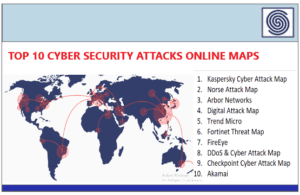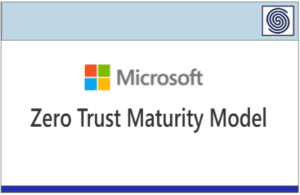Source: securityboulevard.com – Author: Rajan Sodhi
Managing a modern data center is no small feat. Data center managers juggle asset inventory, physical security, energy optimization, and compliance reporting on a daily basis. Adding to the challenge, most infrastructures are growing more complex—with many organizations now operating multi-site, hybrid, or colocation environments. The stakes? Higher than ever, thanks to the demand for uptime, sustainability, and the need to scale.
Data center tracking software delivers real-time, automated insights into assets, environmental controls, and operational risks. But what does this actually mean for data center professionals looking to cut costs, manage risk, and boost operational efficiency?
This post breaks down the core benefits of data center tracking software. You’ll learn how it improves asset management, enhances physical and digital security, drives cost savings, and increases efficiency in real-world settings. Plus, find out what to consider when selecting the right solution for your facility and what the future holds as data centers lean further into automation and AI.
Why Data Center Tracking Software Matters
Data center tracking software is designed to help managers monitor, document, and optimize every critical asset and process within their facilities. Think of it as the nerve center for your entire operation. These platforms automate asset discovery, centralize environmental controls, offer predictive maintenance, and ensure compliance with evolving standards. The result? A single source of truth for everything that keeps your data center running.
Beyond just tracking servers or cooling units, advanced solutions provide analytics dashboards, real-time alerts, integration capabilities, and automated workflows. This framework eliminates manual errors, secures data, optimizes resource allocation, and supports sustainability goals by driving energy efficiency.
Key Benefits Bringing Visibility and Control
Improved Asset Management
Manual spreadsheets and static inventories are relics of the past. Automated asset tracking is reshaping how data centers manage physical and virtual infrastructure, from servers and power distribution units to network components. Here’s how:
- Automated Asset Discovery: The best data center tracking software performs real-time, automated asset discovery. This means every device, rack, and cable is mapped and tracked instantly, with updates pushed to the central dashboard whenever assets are moved or replaced.
- Accurate Lifecycle Management: Track hardware from procurement through deployment and retirement. Historical records simplify maintenance, upgrades, and audits without hunting for paperwork or outdated files.
- Visual Mapping and Reporting: Advanced solutions provide interactive floorplans, heatmaps, and rack elevation views so managers can visualize asset locations, patch panels, and environmental hotspots at a glance.
Enhanced Security
Physical and cyber threats are a growing concern, especially with highly distributed infrastructures. Modern tracking software increases vigilance through:
- Access and Change Logging: Every physical and digital interaction is time-stamped and recorded. Unauthorized access attempts trigger real-time alerts, while full audit trails help meet compliance standards.
- Environmental and Physical Risk Monitoring: Integrated sensor data warns managers about temperature spikes, humidity changes, or unauthorized door openings. Risk heatmaps visualize these hot zones, allowing rapid interventions before minor issues escalate.
- Role-Based Access Controls (RBAC): Grant specific permissions to different team members, ensuring sensitive areas or data aren’t wide open.
Cost Savings
Efficiency doesn’t just save time; it delivers measurable financial wins.
- Optimized Power and Cooling: Integrated monitoring helps reduce energy consumption by automatically adjusting cooling or shutting down unused devices, contributing to sustainability by lowering the carbon footprint.
- Reduced Downtime: With proactive alerting and predictive risk models, the software can flag issues before they become costly outages. Improved uptime means fewer SLA penalties and less lost revenue.
- Streamlined Operations: By automating labor-intensive processes—from compliance reporting to asset tagging—teams can do more with fewer resources, reallocating staff to higher-impact projects.
Increased Efficiency
Automation and centralized dashboards transform organizational efficiency:
- Automated Workflows: Routine tasks like asset moves, adds, and changes can be triggered by logic-based workflows, reducing manual intervention and the risk of human error.
- Real-time Dashboards: At-a-glance metrics and visualizations help managers identify issues instantly, rather than relying on daily walkthroughs or static reports.
- Predictive Analytics: Some platforms use AI-powered algorithms to forecast maintenance needs, optimizing schedules and preventing unscheduled downtime.
Real-World Application Scenarios
Multi-site Visibility for Colocation Providers
A provider managing multiple facilities across continents leverages Data Center Infrastructure Management (DCIM) platforms with centralized control. Automated reporting ensures compliance with global standards, while real-time floorplan views help clients monitor their assets across sites, boosting customer confidence.
Risk Management in Financial Services
Banks use tracking software to ensure strict regulatory compliance and physical security. Automated access logging, temperature monitoring, and instant alerts maintain integrity and uptime for critical infrastructure.
Sustainability Initiatives in Higher Education
A university data center integrates energy optimization tools within their asset tracking system. Managers set aggressive Power Usage Effectiveness (PUE) targets and track environmental improvements, demonstrating progress to stakeholders and auditors.
Choosing the Right Data Center Tracking Solution
Finding the best software starts with your facility’s needs. Consider these factors:
Integration Capabilities
Ensure the platform connects with your existing systems, from building management systems (BMS) to IT asset databases. RESTful APIs enable a seamless, unified environment rather than siloed solutions.
Scalability
If you operate across multiple sites or plan to expand, pick a platform that handles multi-site management, with granular role-based permissions and consolidated reporting.
Automation Features
Look for automated discovery, risk heatmaps, workflow engines, and predictive analytics. Automation saves time and reduces operational risk.
Sustainability and Compliance
Choose software that helps meet energy reduction targets, automates sustainability reporting, and maintains audit trails for compliance with ASHRAE, ISO, or other standards.
User Experience
Ease of use is vital for adoption. Favor platforms with intuitive dashboards, visual maps, and thorough documentation.
Vendor Support and Community
Strong technical support, regular updates, and a responsive user community will make all the difference during deployment and beyond.
Staying Ahead Future Trends in Data Center Tracking
Data center tracking platforms are evolving rapidly. Here’s what’s on the horizon:
- AI and Predictive Maintenance: Next-gen solutions will use machine learning to anticipate equipment failures and schedule preventative work, minimizing unplanned outages.
- Real-time Energy Optimization: Platforms are integrating with smart grids and renewable energy sources to drive PUE even lower and reduce the environmental impact.
- Deeper Security Integration: Expect more granular access controls, biometric verification, and real-time cyber-physical risk assessment.
- Edge and Hybrid Visibility: Tracking software will cover more edge infrastructure and integrate seamlessly with public and private clouds, giving managers full-stack, holistic visibility.
- Automated Compliance Dashboards: Streamlined compliance reporting will become standard, freeing staff from manual audits.
Next Steps Automate, Optimize, and Scale with Confidence
Data center tracking software is no longer a luxury but a necessity for organizations seeking to optimize performance, enhance security, and scale operations across increasingly complex environments. Whether you’re running a single facility or a global network of sites, the right solution delivers holistic visibility, real-time insights, and long-term cost savings.
To stay competitive, focus on platforms offering automated asset management, proactive risk mitigation, energy efficiency optimization, and seamless integration. By investing in advanced tracking solutions now, data center managers can ensure operational resilience and sustainability for years to come.
Interested in seeing how automated tracking can transform your operations? Explore vendor demos, request case studies, and build a checklist of must-have features based on the unique needs of your organization.
Original Post URL: https://securityboulevard.com/2025/06/unleashing-efficiency-top-benefits-of-data-center-tracking-software/?utm_source=rss&utm_medium=rss&utm_campaign=unleashing-efficiency-top-benefits-of-data-center-tracking-software
Category & Tags: Security Bloggers Network,DCIM Tools – Security Bloggers Network,DCIM Tools
Views: 2























































